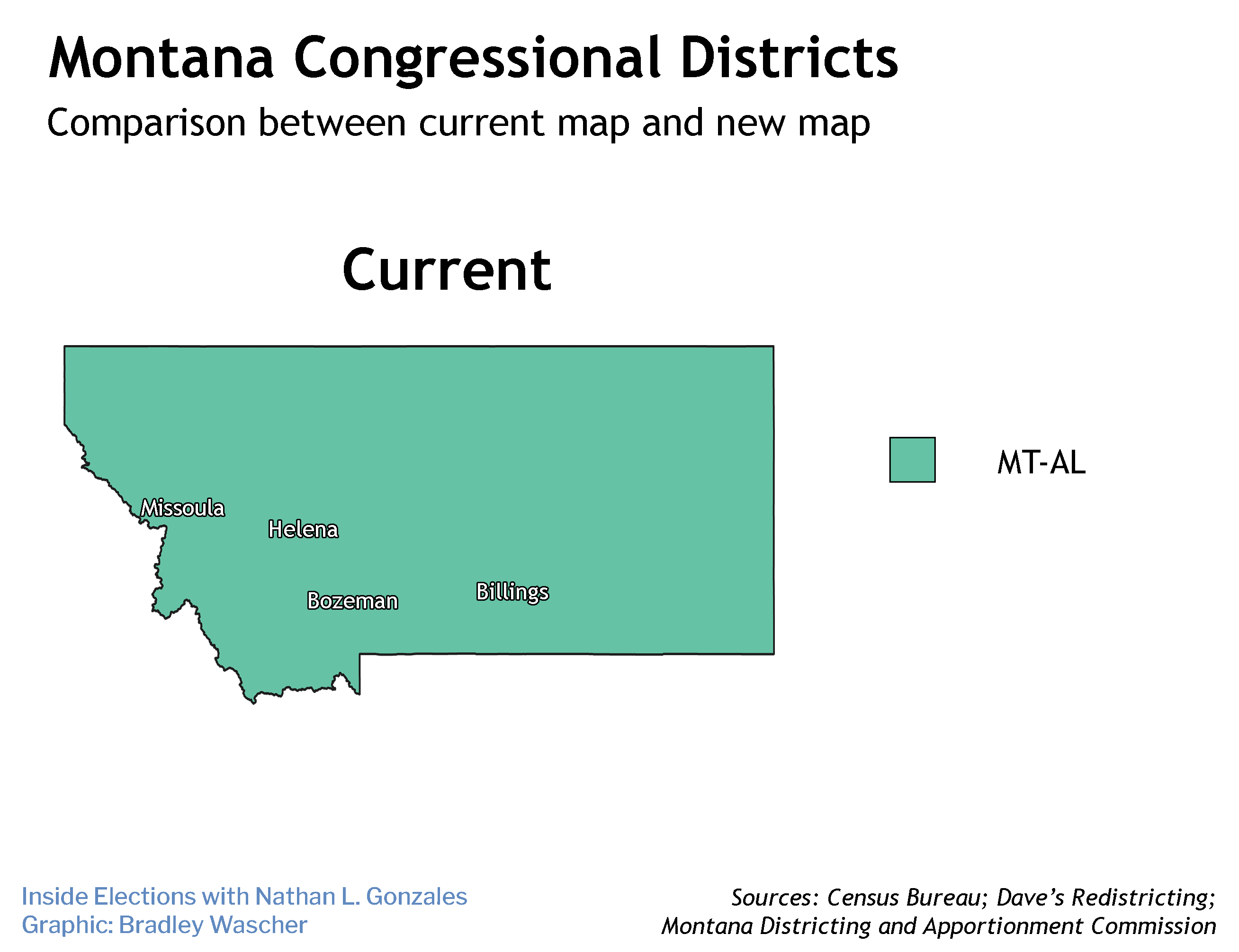When Montana was assigned an additional congressional district earlier this year, it didn’t just double its representation in the U.S. House. It made history, with Big Sky Country becoming the first state ever to bounce back to multiple members after previously being reduced to one at-large district.
Montana lost its second House district after the 1990 Census. But two decades of population growth — fueled in large part by West Coast transplants — led the state to reclaim its second district following the 2020 Census.
An independent commission, made up of two Democratic appointees, two Republican appointees, and one tie-breaking chairperson appointed by the state Supreme Court, was charged with drawing the state’s new congressional map.
As expected, all of the maps seriously considered by the commission picked up the 20th century tradition of dividing the state into an eastern district and a western district.

The western half of the state has long been friendlier to Democrats than the eastern half. Heading into the process, the biggest unknown was just how favorable to Democrats the new western district would be.
Republicans were incensed when the state Supreme Court selected tribal attorney Maylinn Smith to be the commission’s chairwoman, decrying her as a biased partisan because she had previously donated money to Democratic candidates. But in the end, Smith cast her tie-breaking vote for the map proposed by the commission’s Republican members, rather than the Democratic-proposed alternative.
That map was formally adopted on Nov. 12. It creates a solidly Republican district in the east, and a more divided district in the west. Given that Republicans will likely enjoy a good political environment in 2022, the western district may not be immediately competitive, but could be a pickup opportunity...

